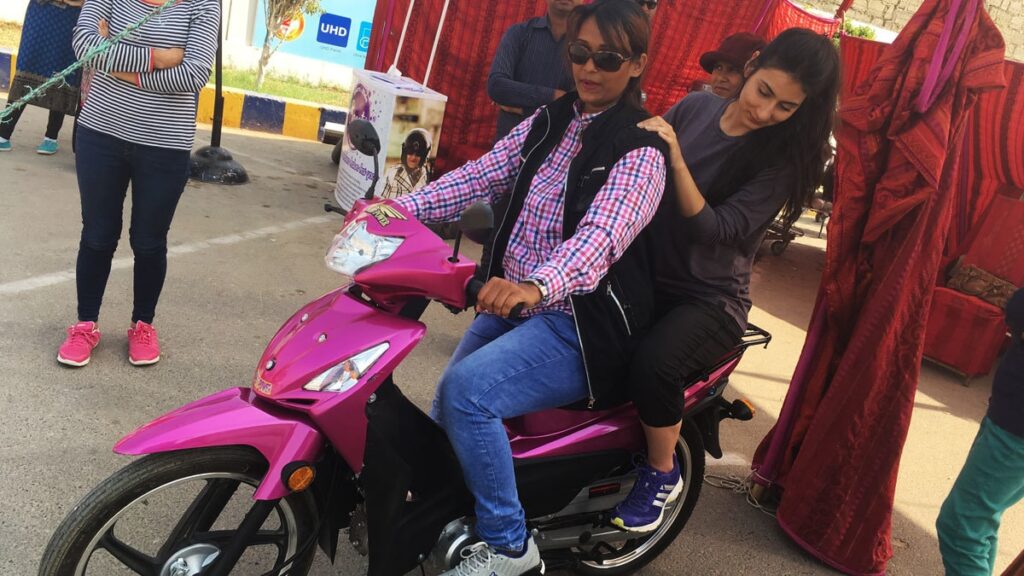In the bustling cities of Islamabad and Rawalpindi, an increasing number of women are choosing scooties as their preferred mode of transportation. With financial independence on the rise and inflation making public transport and car ownership more challenging, scooties offer an affordable, efficient, and empowering way to navigate daily commutes.
A Convenient and Cost-Effective Mode of Transport

Scooties have become a common sight on the roads, with students, working professionals, and homemakers embracing them for their ease of use and cost-effectiveness. Public transportation in Pakistan can often be unreliable, crowded, and time-consuming, making personal transport a necessity for many. However, with the high costs of cars and fuel prices surging, many women are finding a perfect alternative in scooties.
Sania, a young professional from Rawalpindi, shares her experience:
“My scooty is the perfect mode of transportation. It’s so convenient and saves me so much time and money.”
For Sania, riding a scooty is not just about saving money; it’s also about the freedom and independence that comes with being able to travel on her own terms.
Empowering Women Through Mobility
Beyond affordability, scooties are becoming a symbol of empowerment for women. Many women in Pakistan face mobility challenges due to cultural and financial restrictions. Owning a scooty enables them to travel independently, removing their reliance on male family members or unpredictable public transport.
Aneeta, a housewife, explains how her scooty helps her manage household responsibilities efficiently:
“I use my scooty to take my kids to school and pick up groceries. Owning a car is not an option for me as I am the primary breadwinner, and a scooty is the best alternative.”
For many women like Aneeta, a scooty is not just a vehicle but a lifeline that simplifies their daily lives.
A Stress-Free Alternative to Public Transport
Sara Jahangir, another commuter, highlights how scooties help her avoid the stress and delays of public transport:
“Mornings can be chaotic, and relying on public transportation can be a hassle. But with my scooty, I have found a game-changer. It’s a huge relief to have a reliable and convenient mode of transportation that gets me where I need to go quickly and stress-free.”
Sara also points out that scooties require minimal maintenance compared to cars, making them a cost-effective and low-maintenance choice. With increasing traffic congestion and rising transport fares, more women are seeing scooties as a viable and sustainable mode of transport.
The Road to Change: Breaking Barriers

While scooties provide women with newfound freedom, challenges still exist. Many women face criticism from conservative family members or society for riding two-wheelers. However, as more women take to the roads, the narrative is shifting.
The growing trend of women riding scooties reflects a broader movement toward gender inclusivity and empowerment in Pakistan. With government initiatives and social campaigns promoting women’s mobility, the future looks promising for female riders in Islamabad, Rawalpindi, and beyond.
Conclusion
Scooties are revolutionizing the way women in Pakistan commute, offering an affordable, independent, and stress-free alternative to public transport. As this trend continues to grow, it paves the way for greater gender equality, enabling more women to take charge of their mobility and their lives.

